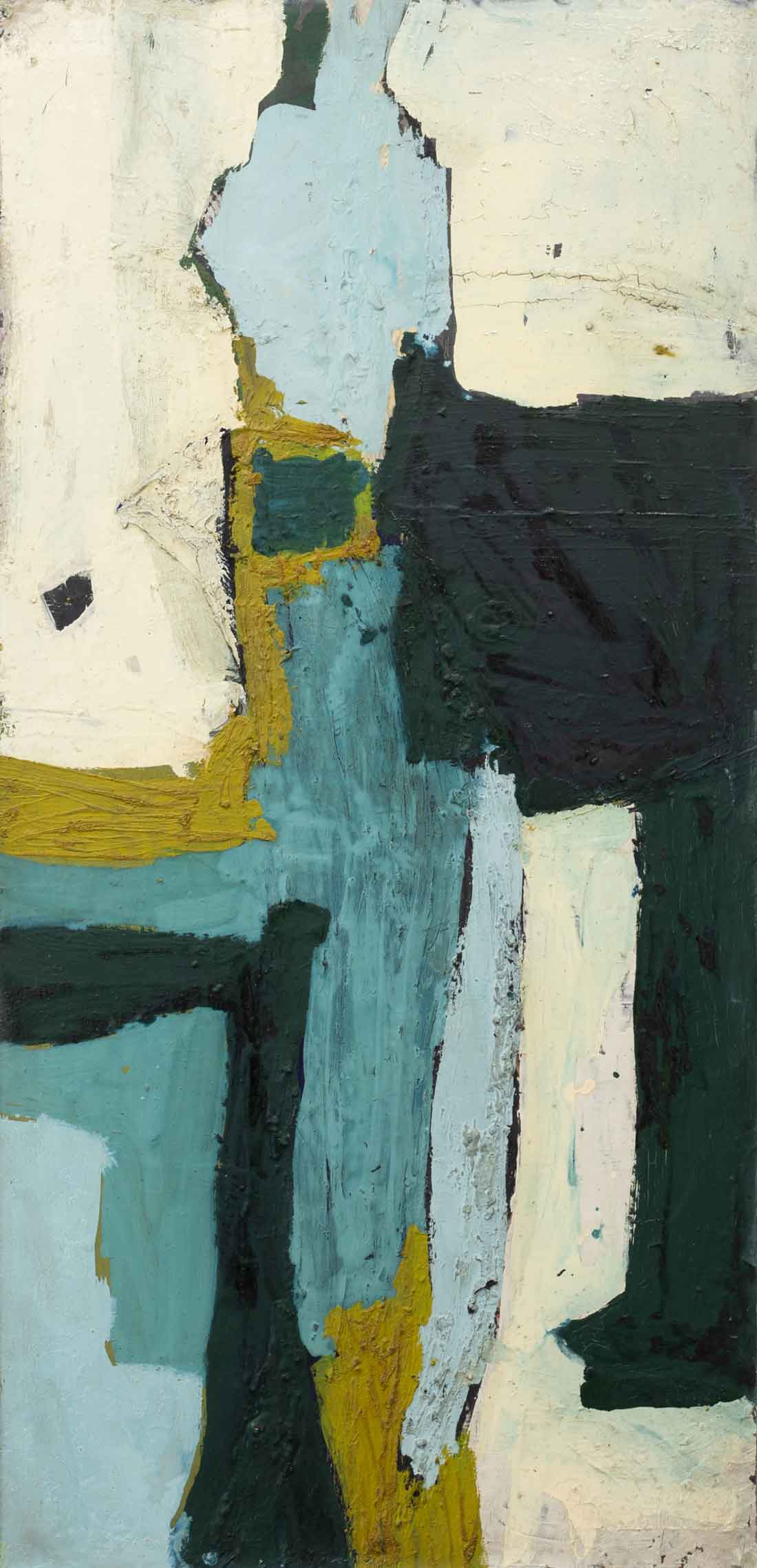Gillian Ayres:Abstract – Cream, Blue, Green, Yellow
1955
Oil on board
48 x 23 inches
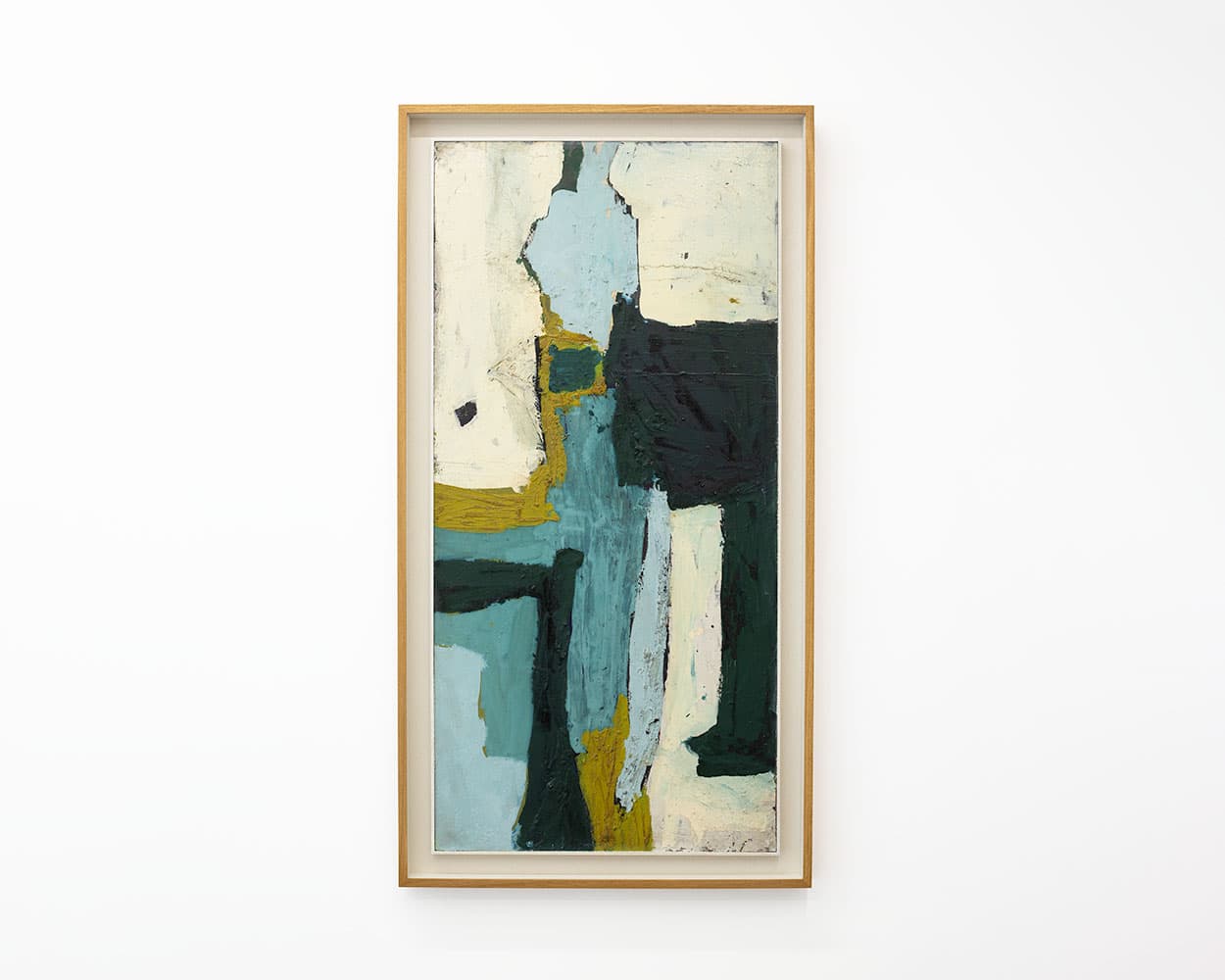
Gillian Ayres looked towards the Abstract Expressionists during her formative years as an artist. In her early works she drew from the freneticism of Lee Krasner and Jackson Pollock’s early works, notably Mural, 1943, the chaotic rhythm of which evidently seeped into Ayres’ work. In 1957, she would paint her own murals for South Hampstead High School in direct dialogue with the American Abstract Expressionists. Likewise, Helen Frankenthaler’s segmented application of paint and colour appealed to Ayres, while Clifford Still’s rough painted forms also made their mark on her works.
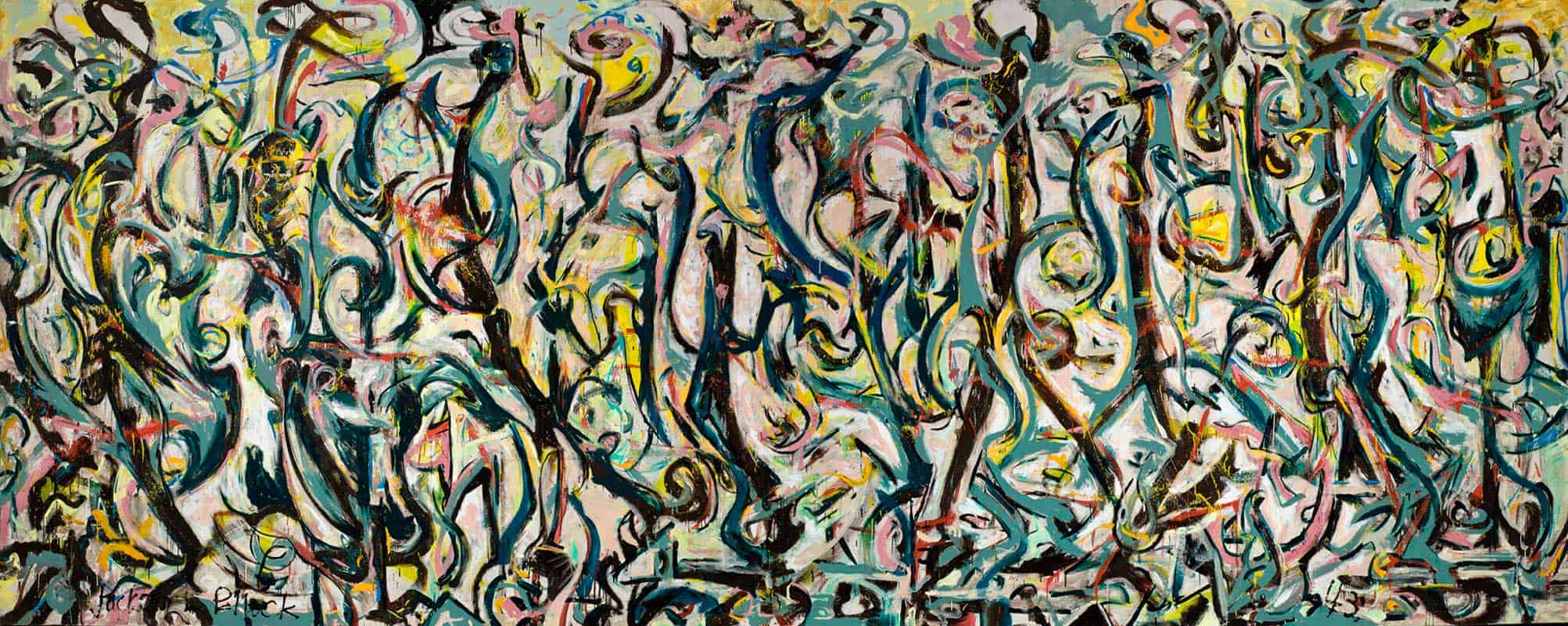
Gillian Ayres’ palette is known for being broad and vibrant. This work, however, is marked by its simple palette of ochre, aqua greens and blues, and cream. The artist applies these paints with a heavily charged brush, creating thick layers of rough, scratched pigment. The angular, geometric forms of these colour blocks create a chaotic, haphazard structure within the composition.
More Info
EnquireIn Context
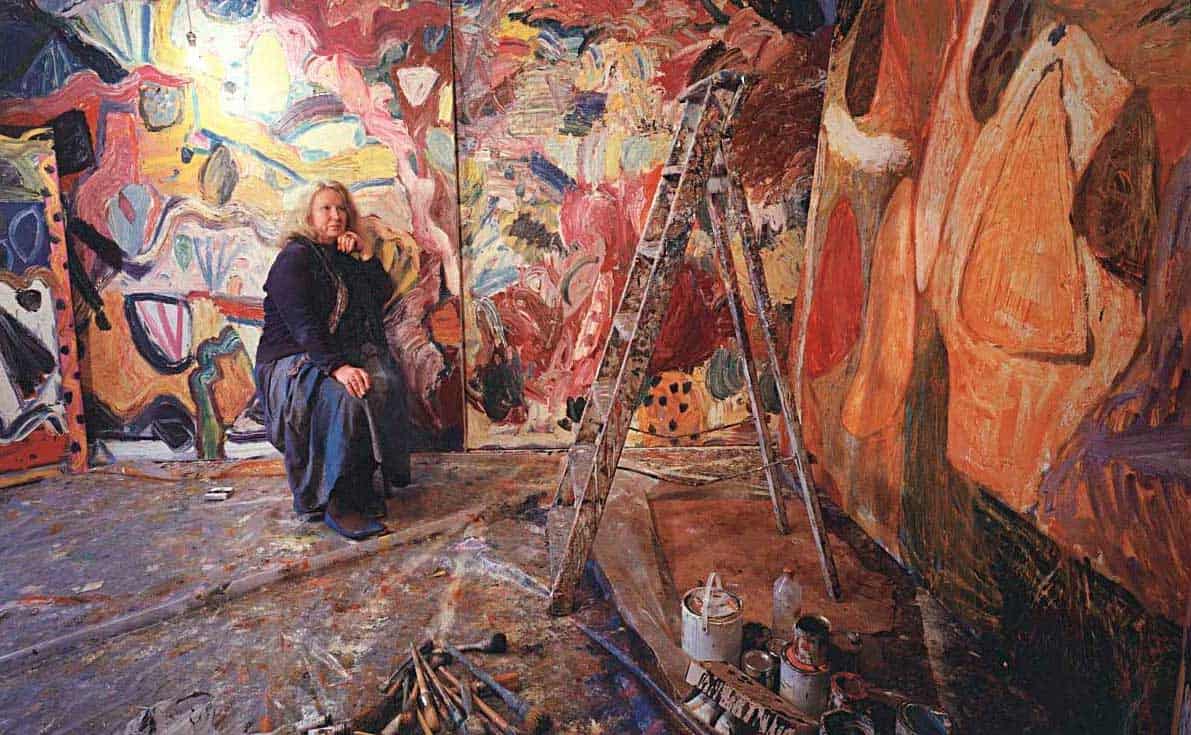
Ayres was a sporadic, though passionate practitioner. Though she was known for her disorganisation, she nevertheless painted rapidly. At her highest level of output during her time in rural Wales, she produced up to one large scale painting per week. Surrounded by mountains and woodland, Ayres drew much inspiration from nature, her local landscape and horticulture, and enjoyed the lack of organisation of rural life.
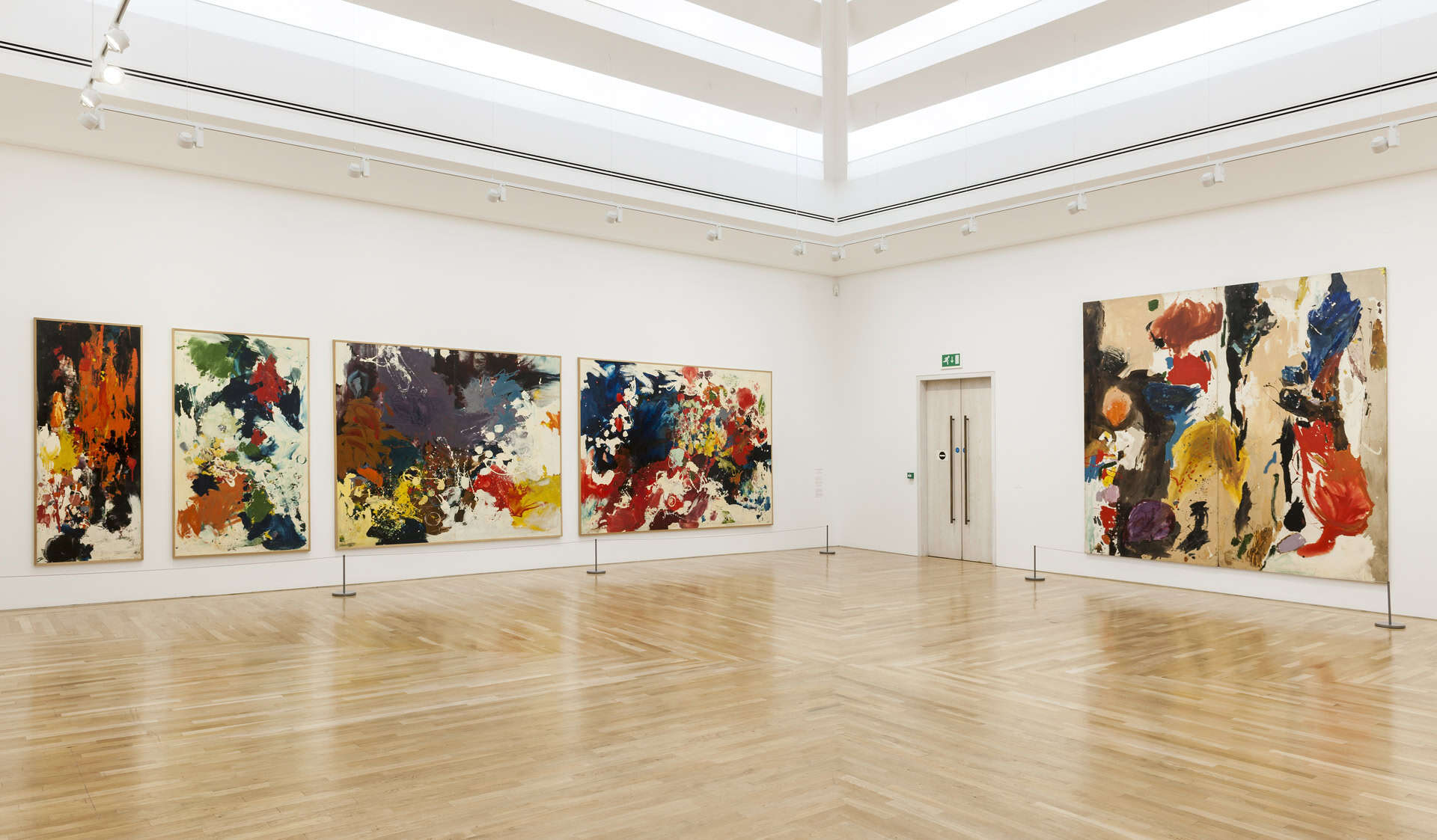
In 1957, Ayres was included in the landmark exhibition Metavisual, Tachiste, Abstract: Painting in England Today at the Redfern Gallery. Soon after, she was the only woman included in the exhibition Situation, showcasing British abstract painting made in the 1960s. Later on in her career, she enjoyed a retrospective at the Royal Academy. As in this image, many of her works for these exhibitions were created on a large and enveloping scale.
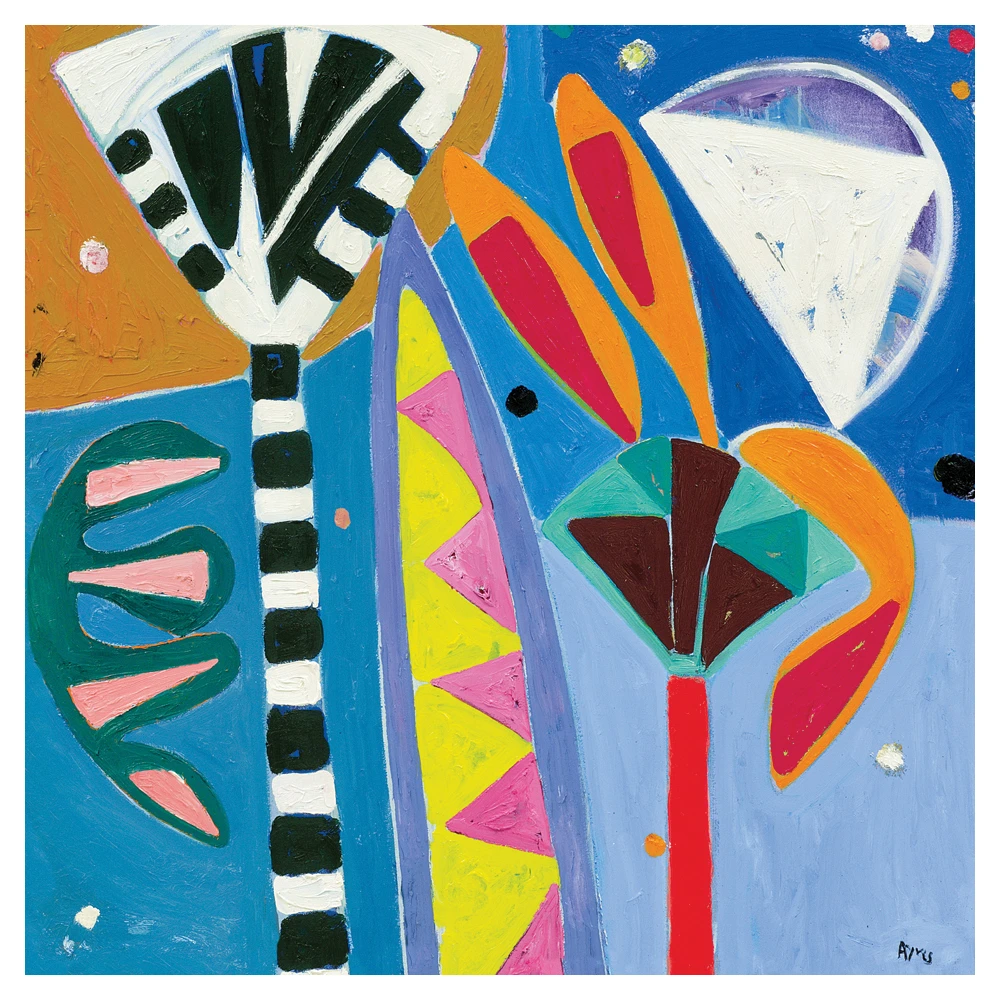
Towards the end of her career, Ayres began looking back to Henri Matisse. This painting, entitled Widsith, displays her interest in the Fauvist’s use of colour and shapes. Moving away from strict abstraction, Ayres injected her palette with vibrant colours and applied paint in defined blocks, eventually forming an image.
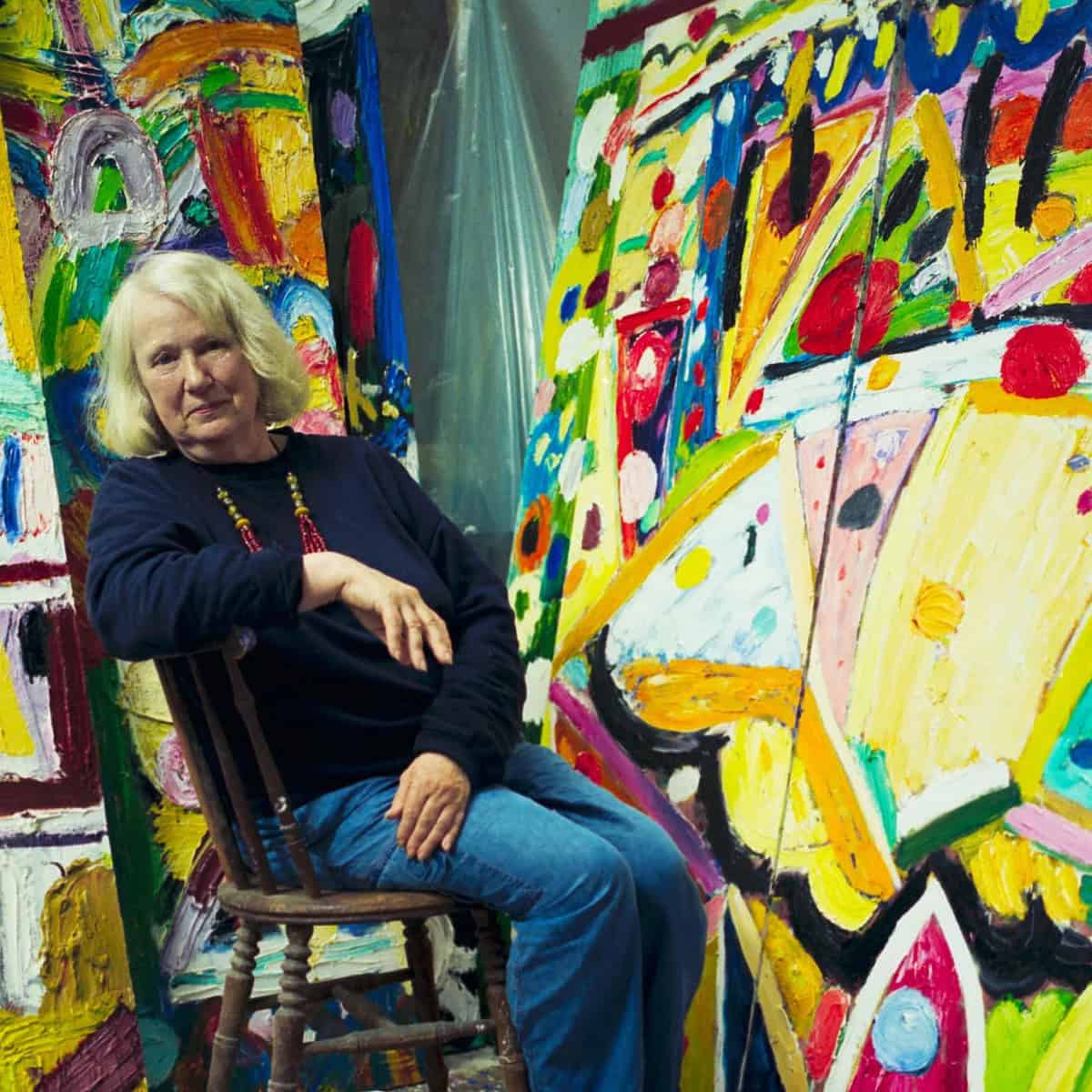
B. United Kingdom1930-2018
Biography
Gillian Ayres rose to prominence in the 1950s, celebrated for her abstract paintings. Her large-scale works were created as if a performance itself, improvising and layering paints until the surface was coated as thick as two inches—post-humously earning her the nickname of ‘Britain’s Jackson Pollock’. The expansive, stretching formats resembled brightly coloured friezes. A skilled painter and printmaker, Ayres was a friend to Howard Hodgkin and Henry Mundy—two of her contemporaries working with abstract painting. Her vibrant paintings have left a lasting mark on British art history.
Gillian Ayres’ (1930-2018) attended the Camberwell School of Arts and Crafts where she received a BA in Fine Art in 1950. A year before her graduation, she was included in the Young Contemporaries exhibition. Quickly gaining renown, Ayres has received awards including the Arts Council of Great Britain Bursary (1975), the Charles Wollaston Award, Royal Academy of Arts (1989), the Blackstone Prize, Royal Academy of Arts (1988; 1990), the Gold Medal, Seventh Triennale — India, British Council (1991) and more. She was elected ARA in 1982, then elected as a Royal Academian in 1991. She participated in several historically significant exhibitions, such as ‘British Painting in the 60’s’ at Whitechapel Gallery (1963), and has shown globally in countries such as China, Wales, the United Kingdom, the United States, Latvia, and South Korea. Her work can be found in collections such as the Arts Council of Great Britain, the British Museum (London), Museo de Arte Sao Paulo (Brazil), the Museum of Modern Art (New York), the Tate Gallery (London), the Art Gallery of South Australia (Adelaide), and the Victoria and Albert Museum (London),
among others.
